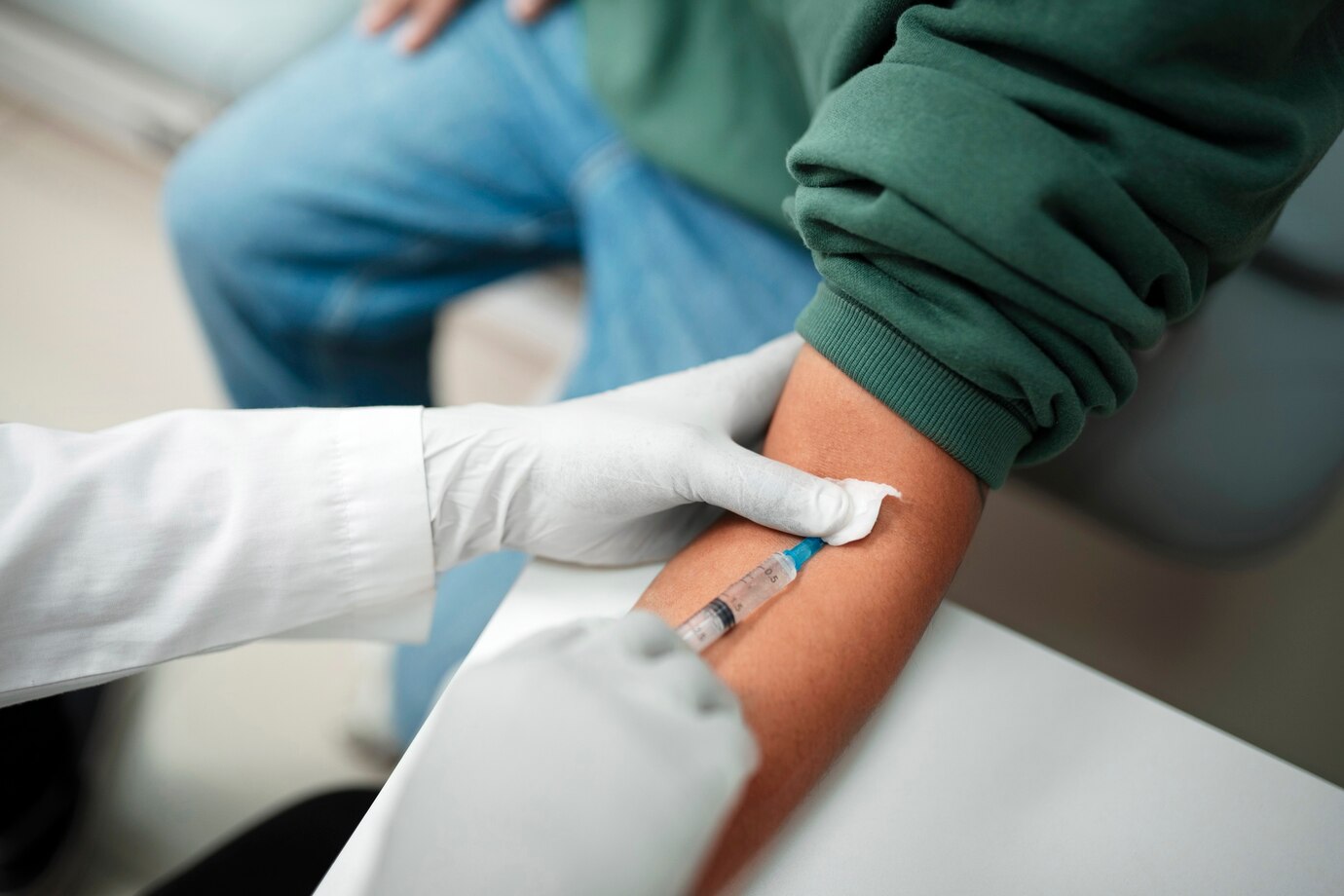Intravenous (IV) therapy is a medical technique that delivers fluids, nutrients, and medications directly into a patient’s bloodstream through a vein. This method allows for faster absorption and more effective results compared to oral or other types of medication delivery. IV therapy is widely used in hospitals and healthcare settings to treat dehydration, nutrient deficiencies, and certain medical conditions. It is also becoming increasingly popular for wellness and recovery, providing hydration, vitamins, and other essential nutrients to promote overall health and well-being.
IV therapy has gained attention for its ability to deliver immediate benefits, including increased energy, enhanced immunity, and improved overall health. The procedure involves inserting a small catheter into a vein, typically in the arm, and administering the chosen fluids or nutrients directly into the bloodstream. Since the nutrients bypass the digestive system, the body absorbs them more efficiently, ensuring maximum effectiveness.
IV therapy is commonly used in clinical, medical, and wellness settings to support recovery and enhance physical and mental performance.
Key Takeaways
Intravenous (IV) therapy delivers fluids, nutrients, and medications directly into the bloodstream, ensuring rapid absorption and effectiveness.
By bypassing the digestive system, IV therapy offers immediate benefits like enhanced hydration and swift treatment responses.
Common additives in IV therapy include vitamins, minerals, and medications tailored to individual health needs.
IV therapy is utilized for various purposes, such as nutrient replenishment, hydration, and administering medications.
While IV therapy provides quick results, it’s essential to consult healthcare professionals to ensure safety and appropriateness.
Table of Contents
How Intravenous (IV) Therapy Works
IV therapy involves administering fluids, nutrients, or medications directly into the bloodstream through a thin catheter inserted into a vein. This process ensures that the body absorbs the substances quickly and efficiently, providing faster and more effective results than oral or intramuscular methods.
The Process of IV Therapy
- Preparation: A healthcare provider will assess the patient’s needs and prepare the IV solution, which may include saline, vitamins, minerals, medications, or other nutrients.
- Insertion: A small needle or catheter is inserted into a vein, usually in the arm or hand. The needle is then removed, leaving only the flexible catheter in place.
- Infusion: The IV solution is administered at a controlled rate, which can take anywhere from 20 minutes to an hour, depending on the type of therapy.
- Monitoring: The healthcare provider will monitor the patient’s response to the therapy, adjusting the flow rate or composition of the solution if necessary.
Types of IV Therapy
- Hydration Therapy: Used to treat dehydration caused by illness, exercise, or inadequate fluid intake.
- Vitamin and Nutrient Therapy: Delivers essential vitamins and minerals, such as Vitamin C, B-complex, and magnesium, directly into the bloodstream.
- Immune Support Therapy: Boosts the immune system with a combination of vitamins, antioxidants, and minerals.
- Detoxification Therapy: Helps flush out toxins from the body using nutrients that support liver and kidney function.
- Recovery and Performance Therapy: Designed for athletes and active individuals, this therapy replenishes lost fluids and nutrients to speed up muscle recovery and improve performance.
Benefits of IV Therapy
- Fast Absorption: Nutrients and medications are delivered directly into the bloodstream for immediate use by the body.
- Improved Hydration: Helps restore fluid balance quickly and efficiently.
- Enhanced Immunity: Supports the body’s natural defense system with targeted nutrients.
- Increased Energy: Provides a quick boost of energy by delivering essential vitamins and nutrients.
- Hangover Relief: Alleviates hangover symptoms like headaches and nausea by rehydrating the body and restoring electrolyte balance.
Uses and Effectiveness of Intravenous (IV) Therapy
IV therapy is used in both medical and wellness settings to address a variety of health concerns and improve overall well-being. Its ability to deliver nutrients and medications directly into the bloodstream makes it one of the most effective methods for rapid recovery and enhanced health.
Medical Uses of IV Therapy
- Dehydration: IV hydration therapy quickly restores fluid balance in cases of severe dehydration caused by illness, heat, or exertion.
- Nutrient Deficiencies: Conditions such as anemia, malnutrition, and vitamin deficiencies can be treated effectively with nutrient-rich IV therapy.
- Electrolyte Imbalance: IV therapy helps regulate the body’s electrolyte levels, which is essential for muscle function, nerve signaling, and overall health.
- Chronic Conditions: Patients with chronic fatigue syndrome, fibromyalgia, and migraines may benefit from IV therapy to alleviate symptoms and improve energy levels.
- Hospital Care: IV therapy is essential for delivering antibiotics, pain medication, and other treatments directly into the bloodstream during hospital care.
Wellness and Lifestyle Uses of IV Therapy
- Athletic Performance: Athletes use IV therapy to improve endurance, reduce recovery time, and prevent muscle cramps.
- Beauty and Anti-Aging: IV therapy with antioxidants and vitamins helps improve skin health and reduce signs of aging.
- Hangover and Jet Lag Relief: IV therapy helps the body recover from hangovers and jet lag by replenishing lost fluids and nutrients.
- Stress and Anxiety Management: Certain IV treatments include magnesium and B-complex vitamins, which help reduce stress and promote relaxation.
Safety and Considerations
While IV therapy is generally safe, it should always be administered by a trained healthcare professional. Possible side effects include mild discomfort at the insertion site, bruising, and, in rare cases, infection or allergic reaction. Patients with heart or kidney conditions should consult their doctor before starting IV therapy to avoid complications related to fluid overload.
Effectiveness and Results
The effectiveness of IV therapy depends on the individual’s health status and the type of nutrients or medications being administered. Most patients report feeling refreshed and energized shortly after treatment. For chronic conditions, regular sessions may be recommended for ongoing benefits.
Restore Your Body from the Inside Out!
Frequently Asked Questions
IV therapy is used to treat dehydration, nutrient deficiencies, and certain medical conditions. It is also used for wellness and recovery.
An average session lasts between 20 minutes and one hour, depending on the type of therapy.
Most patients experience mild discomfort during the insertion, but the process is generally painless.
Frequency depends on the individual’s health needs and the type of therapy. Some people receive weekly treatments, while others opt for monthly sessions.
Yes, hydration therapy helps relieve hangover symptoms by rehydrating the body and replenishing lost nutrients.
Risks are minimal but can include infection, bruising, or allergic reactions at the injection site.
Individuals with heart or kidney disease should consult their doctor before undergoing IV therapy.
Yes, immune support therapy includes vitamins and antioxidants that help strengthen the immune system.
Most people feel the benefits within 30 to 60 minutes of receiving treatment.
Yes, many providers offer personalized IV therapy solutions based on individual health goals and needs.

